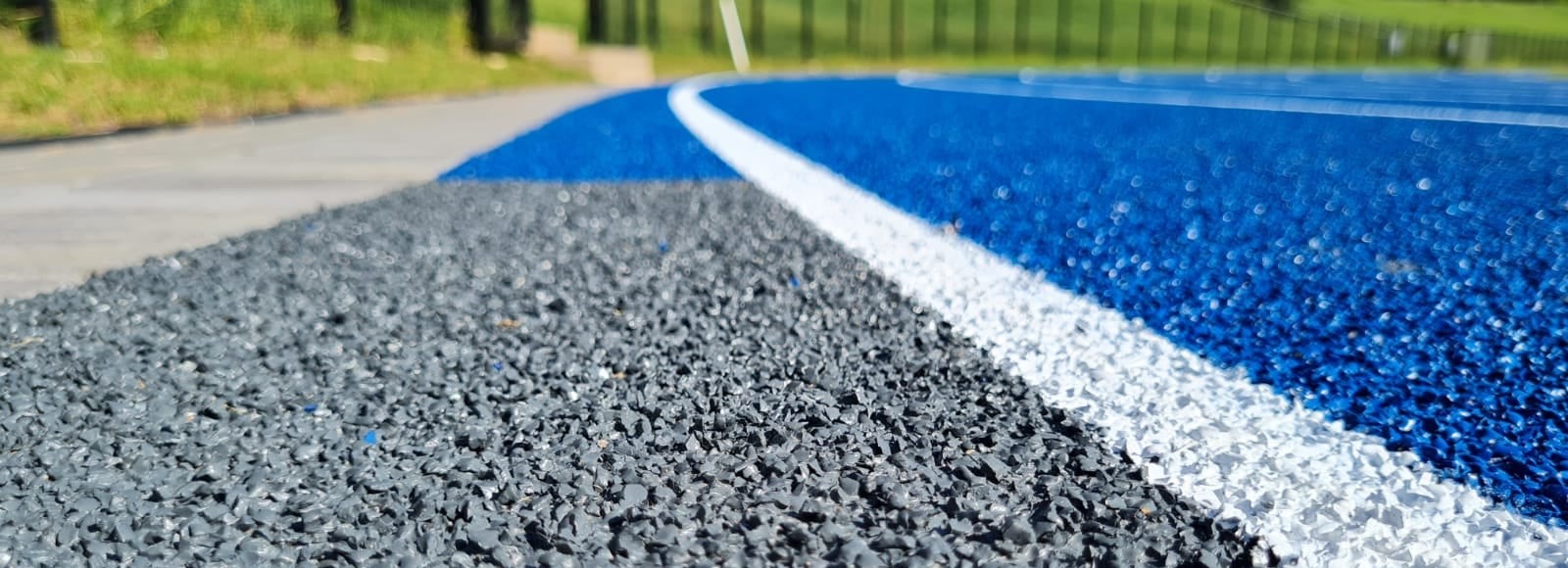Sealing tracks avoids microplastic
14. May 2024
Countless sources cause microplastics*, the abrasion of tyres and road markings or the washing of functional textiles. The effects on the environment are still hardly foreseeable. It is understandable that against this background all plastic products are put to the test, including tracks. They are certainly not among the main causes; however, this is no reason to forego countermeasures. Especially if a track is “misused”, for example during concerts or events, the surface can suffer damage. Granulate will then escape at holes or cracks. However, the track can be protected against this.

SEAL AND AVOID
An effective and at the same time economical measure is sealing, e.g. with CONIPUR 2200. 2-component mixture is ideally applied by airless spraying immediately after laying. In this way, even structured floorings can be protected in the long term. Depending on the demands made on it, a sealant will last around twelve years. It not only increases abrasion resistance: it also serves as UV protection and makes cleaning easier. In addition, rainwater runs off more quickly. CONIPUR 2200 is resistant to many alkalis, diluted acids, salt solutions, mineral oils, lubricants and fuels, as well as seawater and wastewater. It thus protects railways not only under adverse climatic conditions, but also at events where large stage constructions are erected.
The surface sealing also enhances the web optically: The colour brilliance is retained and the reduced dirt absorption gives the surface a fresh and shiny appearance even after years. This allows the user to minimize the discharge of microplastics, reduce repair and cleaning costs and at the same time maintain the functionality and aesthetics of his system for many years. Of course, a subsequent sealing of existing webs is also possible.
The company is already working on solutions that do not release any microplastics at all. For patent reasons, no details can be published yet. Until then, CONICA will continue to pursue the topic intensively and provide information on short-term measures to contain and avoid emissions.
*briefly informed: What is microplasty?
Microplastics are plastic particles with a diameter of less than 5 mm. Microplastics are not only created by the decay of plastic waste. In some cases it is even deliberately produced, for example for cosmetics or diapers. Its distribution is now being researched worldwide, especially in the oceans, as it accumulates in marine animals and causes inflammation in these organisms. However, because microplastics is largely produced on land, the sources are also being sought there. According to a 2018 study by the Fraunhofer Institute for Environmental, Safety and Energy Technology, some 330,000 tons of microplastics are released annually in Germany alone. About one third of this is caused by the abrasion of car tires.
In a study commissioned by the Swiss Federal Office for the Environment, the Swiss Federal Institute of Technology in Lausanne found microplastic particles in Swiss lakes and in the Rhone at Chancy. It was estimated that the Rhone transports about 10 kg of microplastics daily from Switzerland through France to the Mediterranean Sea. The problem here is not so much the mass as the large number of particles that are absorbed by organisms and can have harmful effects.
